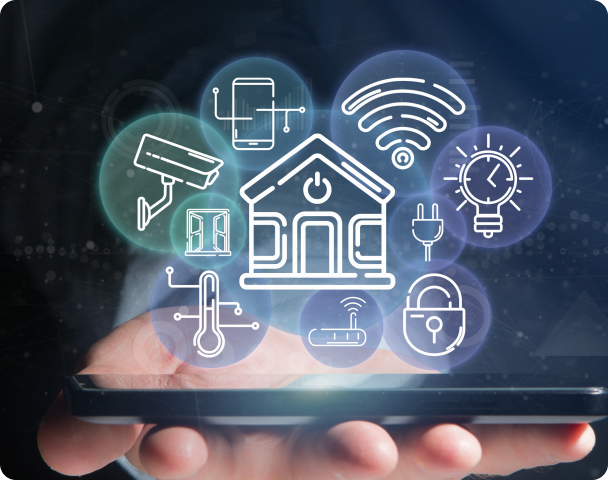Save Your Company Time & Money via IoT For Energy
The cost of living crisis continues in many parts of the Western world and the primary reason behind why most households in countries like the United Kingdom, France and beyond are feeling the final pinch is simple; Energy. The cost of heating our workplaces and homes, keeping our water hot and ensuring the lights stay on is getting exponentially more expensive, with consumers in the U.K. alone facing increases in bills of up to 70%. Businesses are just affected as individual households, and everywhere, companies and individuals are scrambling for a solution to safeguard their work and operations.
Governments can step in to provide their citizens with benefits, tax breaks, etc, that can help to reduce their energy bills, and for companies worried about their own costs there is something they can adopt today that will help; The Internet of Things (IoT) IoT for energy can provide remarkable transformative value for companies via improved efficiency, reduced costs, and future-proofing. If you want to insulate your company from the worst of the energy-based cost of living crisis, then look to investing in IoT for energy.
IoT for Energy
IoT can be applied to energy technology and transform your company in a number of ways, from utilizing smart meters to save money to accurately predicting natural disasters to prevent power outages when they occur. The most apparent means by which IoT improves the day to day operations of business include, but are not limited to, the following areas:
-
1Resource optimization: Companies are able to use IoT devices that can remotely monitor their energy output and analyze how much energy they consume on a daily basis.
-
2Improved maintenance: If a fault occurs in your energy grid a well-integrated IoT system can analyze the problem and automatically contact relevant people to repair said fault if the system cannot do so itself.
-
3Increased stability: IoT for energy systems insurers improved network stability thanks to optimization and maintenance, increasing the reliability of the company to both investors and with other capital stakeholders.
Identify and access management is the best way to ensure the security of your company’s data. If you’re running an IoT for energy system, you can’t afford to compromise on your safety. Our dedicated tool, Kaa IAM, offers simplified access, finely tuned access control, and much more.
How Much Energy Can IoT Save?
For those new to the concept of IoT the amount of energy that the technology can save is remarkable, and is only set to increase thanks to improved development and scalability. According to one study by Transforma Insights, by 2030 IoT for energy enabled companies “will save more than eight times the energy they consume.” If you need to visualize how much this is, it’s equivalent to 230 billion cubic meters of water, or one gigaton of C02 emissions.
And when it comes to the savings earned by IoT for energy vis a vis electrical output the picture is even starker, and should electrify you into action. According to another report, Sustainability in New and Emerging Technologies, IoT will save a rate approaching 1.8 PWh of electricity by 2030, and an additional 3.5 PWh of (hydrocarbon) fuel use, resulting in total savings of 5.3 PWh of energy. These large energy savings equal 58% of the total power consumption of the global information and communications technology industry at present.
Does IoT For Energy Save Money?
If you were thinking that the energy saved via IoT practices would translate into saved money as well, you’d be right, IoT for energy can save from thousands to millions for your company. For example, a real estate company in Sweden decided to trial an IoT smart energy system in an apartment complex it owned and installed smart meters to track total hot water usage.
As water usually accounts for about 20% of the energy bill in single-family homes, and higher in single-person apartments, this was a great basis for an IoT for energy experiment. The real estate company found that it would save 42% of its water costs over 10 years thanks to IoT for energy.
Another way you can save money is by investing in renewable sources of energy for your workplace. According to smart energy consultancy company Energysage, commercial property owners can reduce their electricity bill by 75% by installing solar panels. You can save even more, up to 89%, by utilizing an IoT for energy system that can properly manage your renewable energy grid via optimized operation and maintenance.
IoT For Energy - Future Developments
Renewable energy is a highly beneficial technology you can easily adopt today, but that’s not all, there are a number of interesting developments in IoT for energy worth looking out there. The growth of 5G networks for example will impact considerably on IoT, especially as it will boost battery performance for linked devices. This will improve the performance and reliability of IoT for energy systems.
New generations of highly sensitive sensors are being developed for IoT that will make energy and climate readers more effective than ever. Improvements in big data, machine learning, AI and other related technologies, will make analyzing your energy output and spending more accurate, and give you more actionable insights than ever. These are just some of the developments in IoT for energy going into 2022 and beyond, so watch this space.
Managing IoT For Energy
The benefits of IoT for energy are apparent but being able to properly implement them depends on your ability to manage the system you put in place, you need a high-quality management system. This system needs to be able to fully monitor your smart meters, consumption, etc, in a way that’s simple for your team members to use. There’s no sense in trusting them with a tool they don’t fully understand after all.
IoT for energy management tools need to be sensitive and intelligent, to record as much data as possible and to analyze it fully, processing what you collate into actionable insights. Look for something that you can customize to meet your company’s particular needs, and give yourself flexibility by investing in a tool that is well suited to running a renewable energy grid too. It’s well worth your time, and taking the smart decision to invest in IoT for energy via smart meters and dashboards, will turn your company into a smarter entity than ever.
The Takeaway
The Kaa team designed our products to meet the exacting standards of high-level companies looking to invest in IoT for energy, and if you want to propel your team into industry 4.0 and beyond, we can help. Our smart building solutions bring the power and convenience of IoT technology into your homes and workplaces and will create a more sustainable future for your enterprise. The Kaa platform also includes in-built smart metering that’s ready to operate out of the box immediately and can be customized to a high degree.
Related Stories
- Business
Business guide to IoT data analytics
As a key part of modern IoT solutions, IoT data analytics enable businesses and IoT enthusiasts to convert data collected from their...







